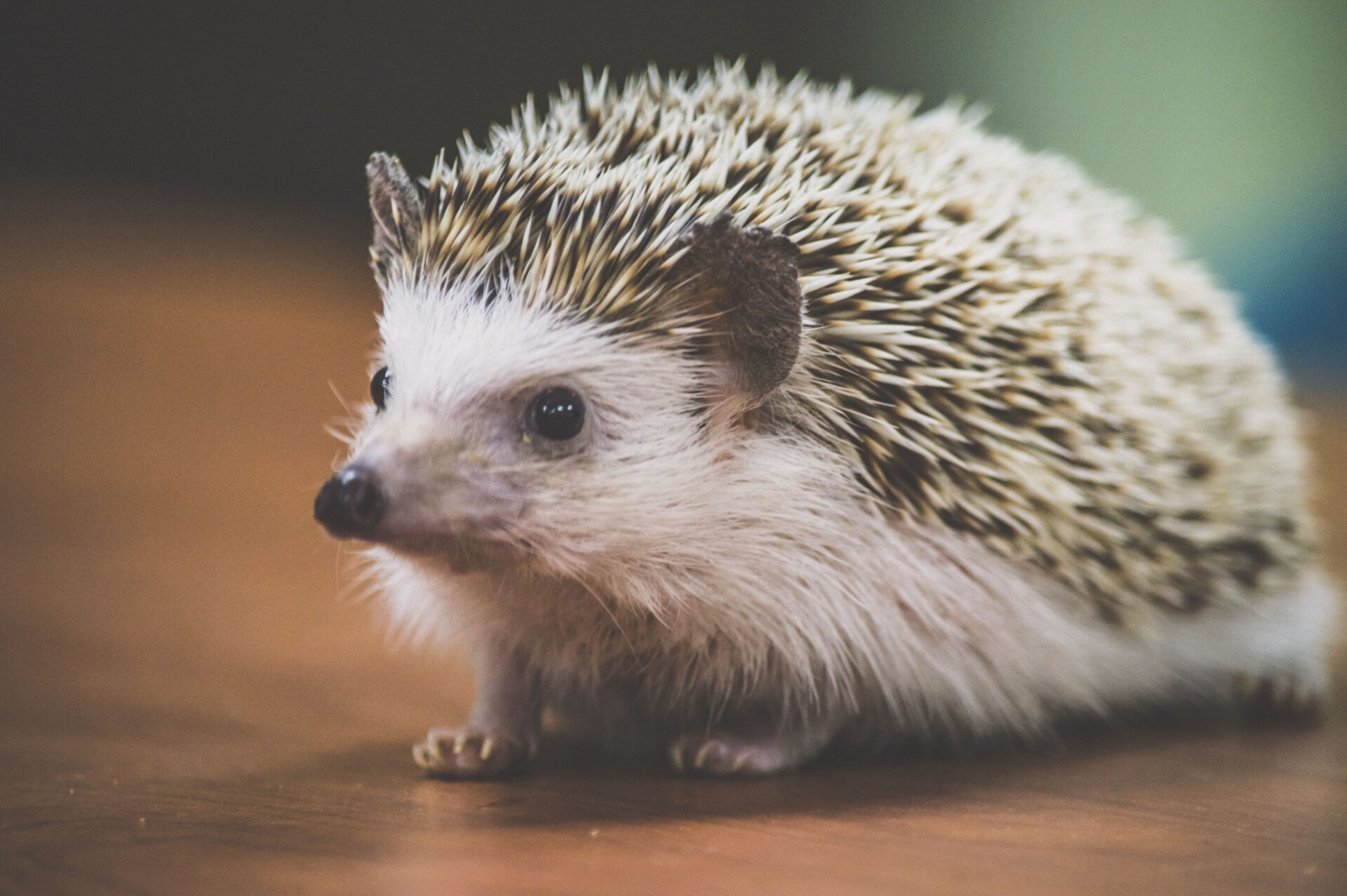African Pygmy Hedgehog

Basic Information:
Scientific Name: Atelerix albiventris
Habitat: African pygmy hedgehogs are found throughout the savannas of central and eastern Africa.
Diet: African pygmy hedgehogs eat a variety of slugs, worms, insects, eggs, roots, fruits and even small mammals and snakes!
Size: 0.2 to 0.3 feet tall / 0.5 to 0.8 feet long
Weight: 0.9 to 1.3 pounds
Lifespan: 2 to 3 years in the wild. 6 to 9 years in human care.
Distribution Map:
I.U.C.N. Conservation Status:

What does this mean?
Least Concern – a species determined by the International Union for Conservation of Nature (I.U.C.N.) to be pervasive, abundant, and thriving.
Our African Pygmy Hedgehog:
Delphi (Female) – Born April 6, 2022
About African Pygmy Hedgehogs:
African pygmy hedgehogs are one of the most common breeds of domestic hedgehog that you can find. They are easily distinguishable by their small size and characteristic quills on their back. However – despite how it may seem – these critters are NOT related to porcupines. Hedgehogs are part of the Erinaceidae family which includes moonrats (gymnure), shrews, and moles. Hedgehogs are primarily insectivores – meaning that they eat insects – but that doesn’t meant that they won’t sample other foods that they can find such as eggs, fruit, and even small snakes and mammals. Most of their activity takes place at night when they are safer from predators. While awake, hedgehogs are known to wander miles every night in search of food. If they run into any danger on the way, their primary defense mechanism is to curl-up into a ball. This maneuver protects a hedgehog’s soft belly, and makes it difficult for predators get at the hedgehog without hurting themselves.
Did You Know?!
- The quills of an adult African pygmy hedgehog are permanent and cannot easily be removed without injury to the animal. However, young hedgehogs do lose the quills they are born with and replace them with adult spines in a process called “quilling.”
- African pygmy hedgehogs have excellent senses of hearing and smell. They can smell food that is located 2 to 3 inches under the ground.
- African pygmy hedgehogs have a natural immunity to the venom of certain animals. This allows them to consume small venomous snakes and arthropods.
- If an African pygmy hedgehog encounters an object that produces an unfamiliar smell, it will lick the object and form a frothy paste inside its mouth. It then uses its tongue to spread the paste over its spines. This is thought to camouflage the hedgehog’s natural scent, and to deter predators who will often avoid the new and potentially irritating substance. This behavior is referred to as “anointing.”
